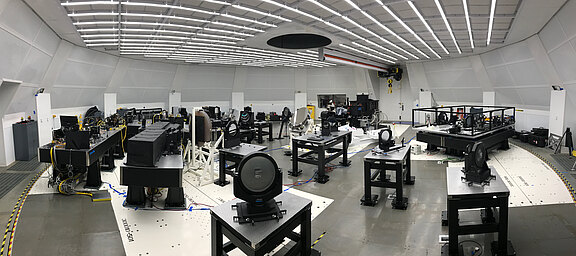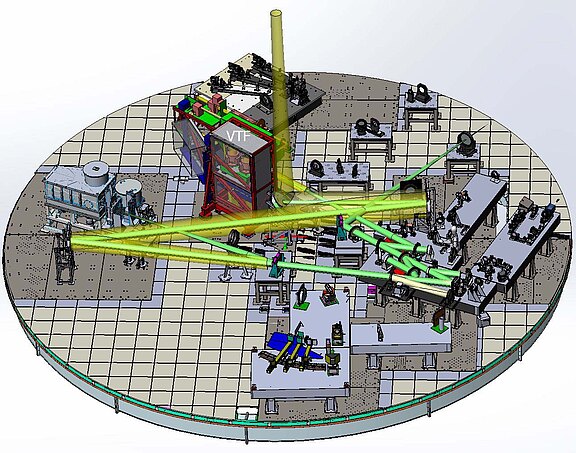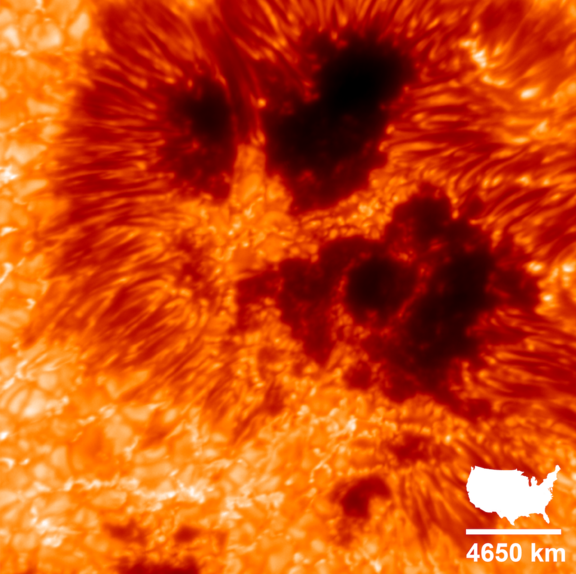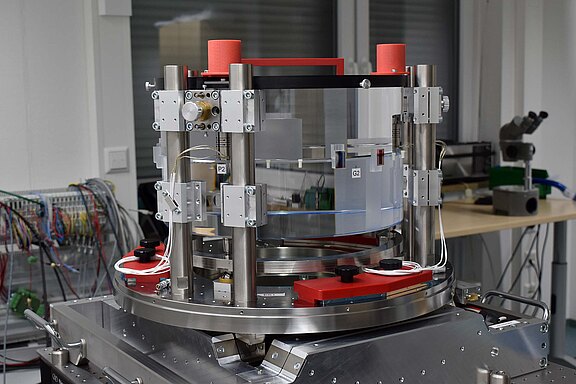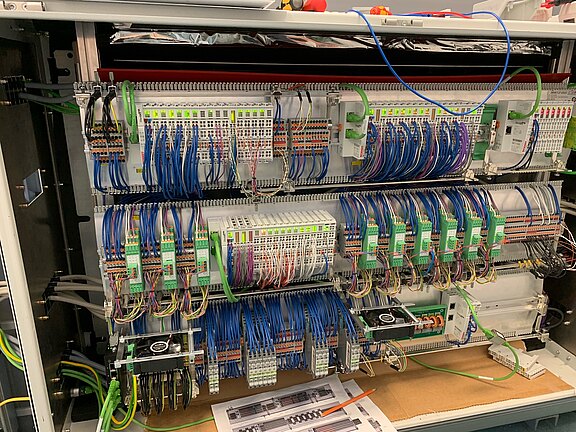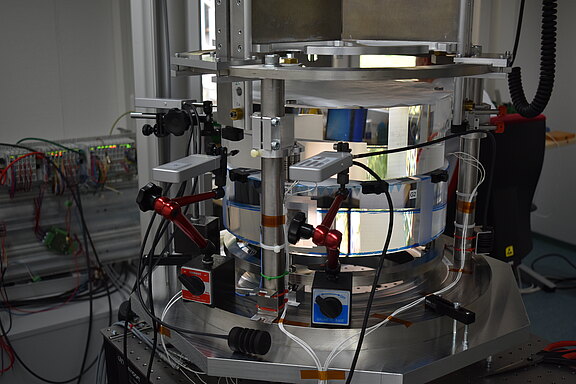Visible Tunable Filter (VTF)
Overview
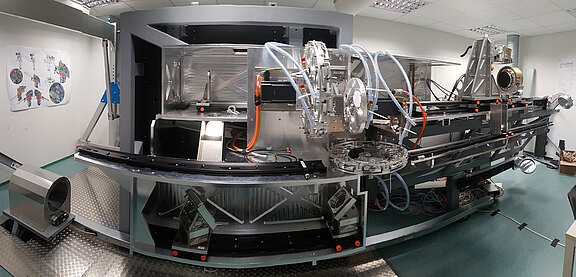
Panoramic view of the VTF F1 unit under construction in the upper part of the VTF laboratory at KIS. The laboratory extends over 2 floors so that VTF can be fully assembled and even tested at KIS. (Figure: VTF/KIS)
The Visible Tunable Filter (VTF) is an imaging spectro-polarimeter for the new US Daniel K. Inouye Solar Telescope (DKIST).
VTF generates two-dimensional images of the sun's surface in a very narrow wavelength range by scanning absorption lines in the visible part of the solar spectrum. The result is a data cube with two spatial dimensions and one spectral dimension. Changing the polarisation state of the measured radiation makes it possible to detect signatures of physical phenomena in the solar atmosphere that change the polarisation state.
VTF has been under development at the KIS since 2010 and was set up and put into operation in a laboratory specially equipped for VTF. After successful testing at the Freiburg VTF laboratory, the instrument was completely dismantled, packed and shipped to Maui/Hawaii at the end of 2023. In 2024, the instrument was set up on site at DKIST in several campaigns and has already proven its its functionality with the first successful recordings of solar data. At the heart of the development are two optical Fabry-Perot interferometers with a free aperture of 250 mm each which are unique worldwide in terms of size and precision. The total costs of VTF amount to around EUR 12 million, half of which were provided by the German Federal Ministry of Research (BMBF/Desy) and the Baden-Württemberg Ministry of Science and Culture (MWK). KIS used basic funding to significantly contribute to the project, primarily by providing staff specialised in science, engineering, and technology. VTF was largely manufactured at KIS workshops and laboratories. Other project partners made contributions in terms of funding and personnel, i.e. NSO/AURA in the USA, the Max Planck Institute for Solar System Research (MPS) in Göttingen and the Switzerland-based IRSOL in Locarno. The VTF project is executed in cooperation with companies and institutes worldwide specialised in developing new technologies and processes and in manufacturing assemblies with extreme requirements in terms of precision and materials.
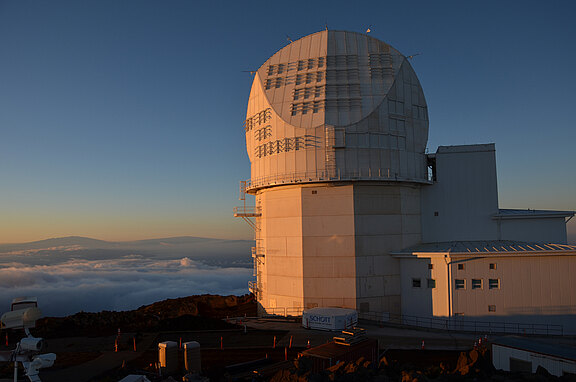
The DKIST at the 3052-metre-high Haleakala observatory at sunrise. In the background Mauna Loa and Mauna Kea on the main island of Hawaii. (Figure: VTF/KIS)
With its aperture of 4 metres, DKIST is by far the largest solar telescope in the world. It was built between 2007 and 2020 by a consortium of 22 American research institutions with financial support from the US National Science Foundation under the leadership of the National Solar Observatory (NSO/AURA). Located on the Hawaiian island of Maui, it has been in operation since 2021 under the management of NSO. VTF is the largest contribution to DKIST from outside the USA. Having made this contribution entitles researchers at KIS and its project partners to have privileged access to DKIST.
The large aperture of DKIST makes it possible to observe small elements on the surface of the sun with an extension of merely 20 kilometres. In order to achieve this, powerful adaptive optics compensate for the influence of turbulence in the Earth's atmosphere during observation. The analysis covers visible and infrared spectral ranges up to a wavelength of 5 µm. Due to its design as a low-scattering oblique reflector, DKIST can also be used to observe the solar corona.
